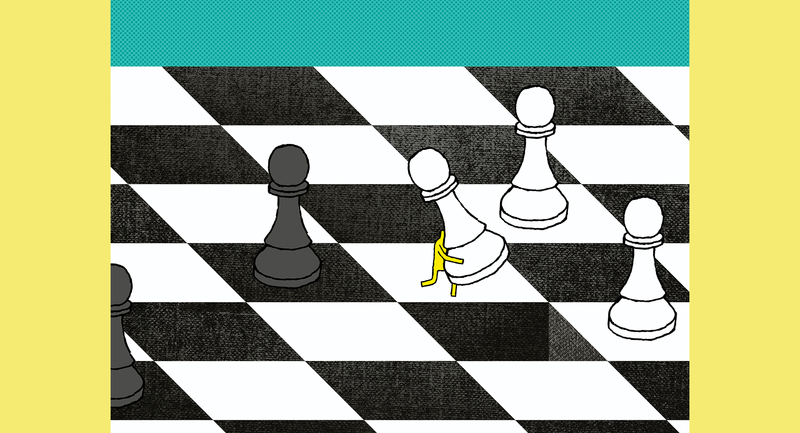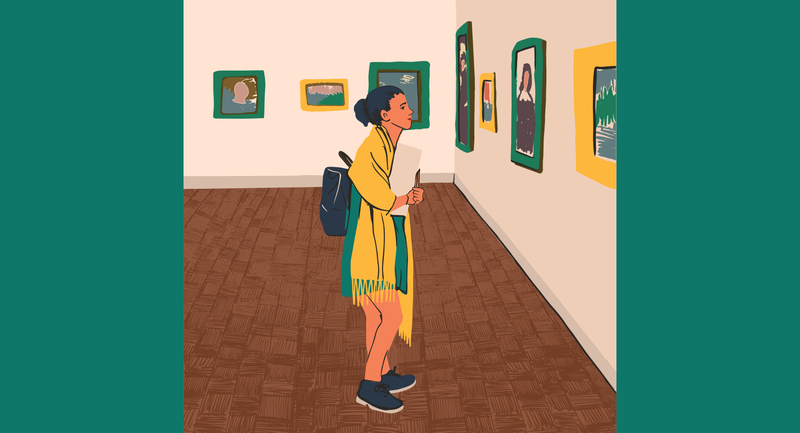Engineering a Better Tent
A group of 12 girls from San Fernando High School in California didn't have to look far to identify a problem they wanted to solve. Their community had seen a steady rise in homelessness, with people living on the main thoroughfare, at a local park, and under bridges. With health and safety concerns for the homeless in mind, the girls spent more than a year creating a solar-powered tent, complete with LED lights, antibacterial UV lights to sanitize the tent, and a charger for electronic devices. Because temporary shelters must be removed from the streets of Los Angeles during the day, the team designed the tent so it easily collapses into a backpack.
The project began when Evelyn Gomez, a board member of DIY Girls (a nonprofit organization aimed at increasing girls' interest and success in STEAM), learned about a funding opportunity from the Lemelson-MIT Foundation. Gomez visited San Fernando High School (her alma mater) to recruit female students interested in invention. With the guidance of Gomez and San Fernando math teacher Violet Mardirosian, the resulting all-female team met to brainstorm an invention that would help the homeless community members they passed on their way to school each day.
"People tap into what they know. And this project is a prime example of that," said Gomez. "These girls saw a problem in their community. And if we have more young women, more people of color, and more people from low-income communities who are able to identify a problem within our communities, then we're going to be better equipped to solve those problems because we've lived through them."
In September 2016, the San Fernando team was one of 15 U.S. high school groups to receive a $10,000 Lemelson-MIT Foundation grant to solve a real-world problem through a technological invention. The San Fernando students broke into three groups to design the tent. One group focused on structural issues and tested the stability of easily assembled tents, ultimately deciding to use fiberglass rods that would allow the tent to pop up. Another group studied materials, looking for fabrics that were insulating, durable, and water repellant. They built and tested a prototype to see how the tent held up to rain, friction, and puncture before settling on final materials for a second prototype.
A third group focused their efforts on learning about solar power. They hacked an existing product to study how solar-powered devices functioned. While researching the UV lights they planned to use for disinfection, the group learned about the dangers of human exposure to UV. As a result, the students added two safety features to their design—an infrared sensor that shuts off the UV lights if a person is inside the tent and a countdown timer to let the tent user know when it's safe to go inside the tent. To incorporate these features, the team had to learn how to code a microcontroller called Arduino—drawing from extensive research and input from experts.
In June 2017, the team presented their invention at EurekaFest, an event at the Massachusetts Institute of Technology where young inventors showcase their work. On a blog documenting their process, the girls wrote, "We were never aware of how proud we are making our community by helping create an invention that's directed to helping the homeless population. Up to that moment, everything had felt like a school project, but afterwards, it started to feel like we were solving a real-world problem."
Building Historical Perspective
What is the full story of Jamestown? This is the question that 4th graders at Two Rivers Public Charter School in Washington, D.C., explore each fall.
Jamestown, the site of the first permanent English settlement in the Americas—and one of the first places that European, Native American, and African people encountered one another—provides a rich context for students to explore the problem of perspective. The historical record is rich with written histories of the Europeans, but lacks the perspectives of native people and Africans. With this problem in mind, 4th graders grapple with how to get into the minds of people who lived more than 400 years ago and tell their stories.
During this ten-week project, students not only develop a deep understanding of historical content related to Jamestown, but they also learn critical-thinking and problem-solving skills that are transferable to any subject or context. The challenge of reinterpreting history from primary and secondary sources, which are often incomplete and conflict with one another, requires students to weigh multiple perspectives and make reasoned choices about how best to reconstruct the story.
Using a common approach to problem solving, students follow five basic steps: First, they identify what they already know about the problem. Then they articulate what they need to solve the problem. After that, they generate ideas for solutions and later develop background knowledge about the problem. Lastly, they arrive at solutions using a design process that incorporates regular critique and revision. By following this simple approach to problem solving in daily classes and in longer-term projects, students begin to see these steps as a habit of mind for approaching any problem they may face.
Last year's Jamestown project illustrates this problem-solving process in action. Students began by identifying what they already knew about Jamestown, noting that Jamestown is in Virginia and that Virginia was one of the early colonies. However, students also recognized large gaps in their knowledge. They articulated that they needed to know more about who was involved, what major events took place, and how they would find out more. After reading a short history of Jamestown, students were specifically interested in learning more about the African and Native American cultures that were part of the settlement.
Next, they moved to define pathways to a solution, deciding that they would ultimately represent the lost voices of Jamestown in a musical format. From there, students dove deep into building their background knowledge by reading primary sources, such as excerpts from John Smith's autobiography, and secondary sources like children's books from the perspective of Pocahontas. Students also examined artifacts from all three cultures. They culminated the building of their background knowledge with a two-day visit to the archeological site at Historic Jamestowne and the Powhatan village at Jamestown Settlement near Williamsburg, Virginia.
At the end of the problem-solving unit, students created a final product that integrated writing and the arts. In past years, students have conveyed historical perspectives through expressionist paintings, dramatic performances, and first-person narratives. With last year's project, students—inspired by the Broadway hip-hop musical, Hamilton—worked with our drama teacher to create two-person raps that provided the perspective of two actors in the story of Jamestown. Whether a historic figure or a fictionalized character representing a group, the students embodied the perspectives lost to history. They then performed their raps at one of our showcases of learning for families and other community members.
Tackling the problem of perspective through an in-depth study of the history of Jamestown has provided 4th graders at Two Rivers with opportunities to expand their critical thinking and problem-solving skills as they make history come alive.
The Art of Robot Design
In my classroom, my elementary students are artists. Just like scientists, artists solve problems, formulate ideas, identify solutions, and experiment. Last year, I invited my students to design and create robots that would be useful to society. I chose robots for this project specifically because of their open-ended nature: Robots do not have definitive shapes or characteristics, and there is not a wrong way to create a robot. I opted to have students create 2–D designs, rather than 3–D replicas, so that students could dream big and invent the impossible.
Students started by identifying problems they encountered in their lives—such as daily chores like cooking or homework—as well as problems in the larger world around them, including bullying, homelessness, and hunger. After pinpointing these difficulties, students targeted possible solutions by dreaming up robots that were designed to meet these specific needs. For instance, one kindergartner designed a cooking robot that had at least 20 different arms just for slicing and dicing pizza.
As students worked on their robots, they also learned new printmaking techniques that added contemporary texture to their creations. They used rubbing plates, crayons, and watercolors to blend colors and explore basic color theory. They showed the difference between actual and implied texture by demonstrating how to create the illusion of different surfaces and by incorporating found objects to create a tactile experience. They also tried paper marbling, collage, and other mixed media techniques.
In the end, students' clever concepts for their robots were even more impressive than the art skills they acquired. We had robots that could solve homelessness by helping low-income families build homes out of nontraditional materials. Other robots helped people find jobs and make friends by making introductions and connections. Some robots could clean your home, babysit your brothers, walk your dogs, and do your homework. There were mermaid-bots, mommy-bots, superhero-bots, and dragon-bots. All of the robots were conceived of to quickly perform tasks that would traditionally take a human a lot of time to complete. For each robot, students crafted an artist's statement that listed the name of the robot and a list of special skills. Every robot was unique, thought-provoking, and relevant.
U.S. industrialist Henry J. Kaiser said, "Problems are only opportunities in work clothes." When students encountered obstacles during this project, I helped them to view problems as opportunities for learning and reminded them that tackling a problem takes considerable effort and multiple iterations. For instance, one student was working on a baking robot, but she couldn't figure out how to make the oven look realistic. After some trial and error, she amended her creation to include a lightweight door with a handle and a plastic window that would open and close with the aid of a magnet.
When the project was complete, we hung students' artwork at a show, representing the artistic problem-solving creations of more than 750 students. We later invited students from a local high school to use the robots as inspiration for two murals at preschools in the community—artwork to inspire more young people to become problem solvers.








